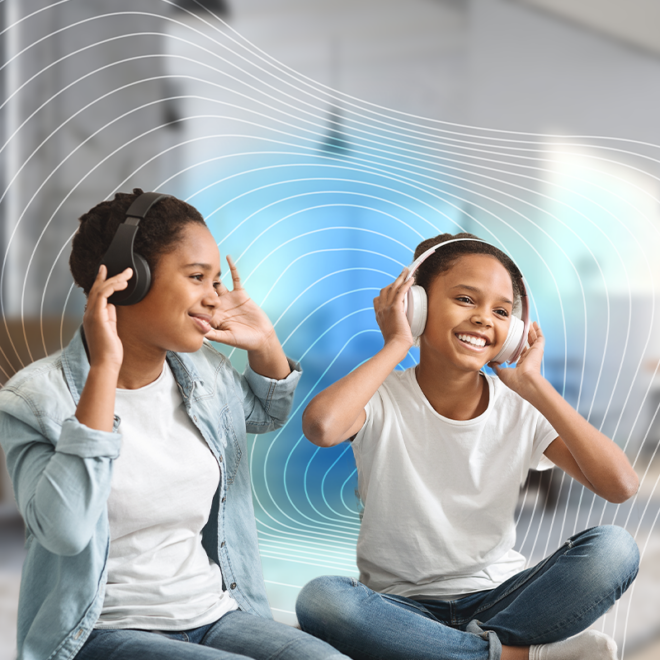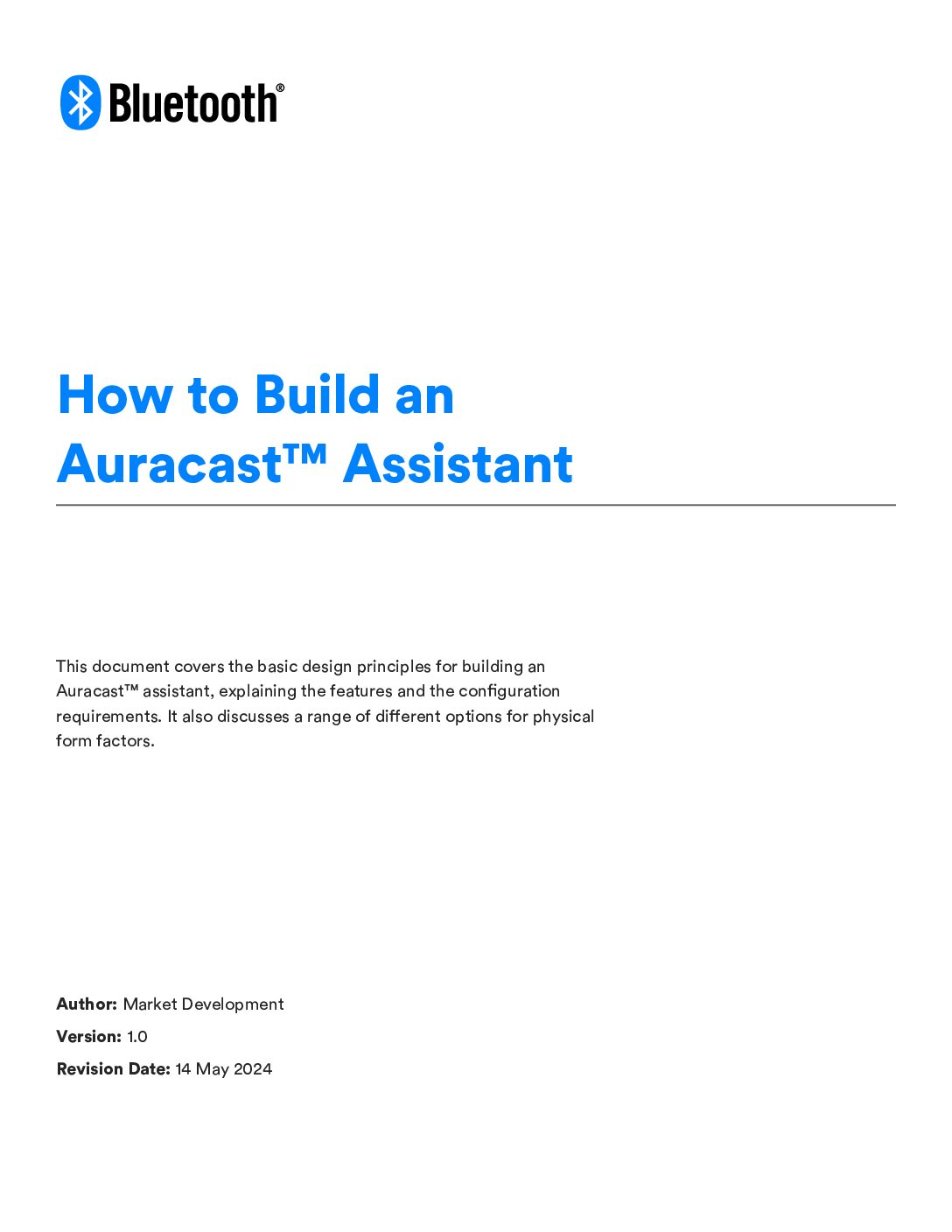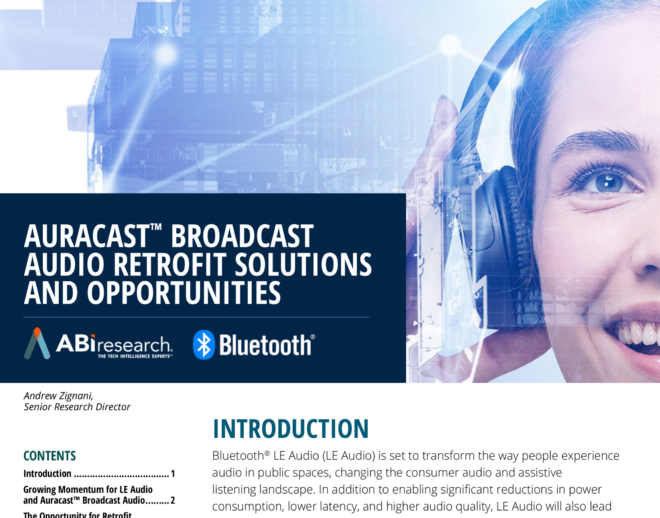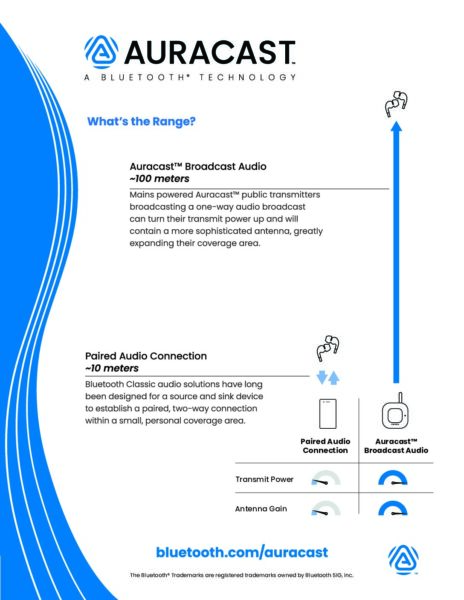The views and opinions expressed by Peter Liu are his own, acting as an individual member of the Bluetooth Special Interest Group (SIG) Board of Directors and do not necessarily reflect the official policy or position of the Bluetooth SIG nor of his employer.
Building on 20 years of innovation, Bluetooth LE Audio will enhance the performance of Bluetooth® audio, add support for hearing aids, and introduce Auracast™ broadcast audio – an innovative new capability that allows you to share your audio experience with others around you as well as let you tune into audio in public venues like airports, bars, gyms, cinemas, and conference centers.
Recently, I had an opportunity to speak with Peter Liu, a major contributor to the forthcoming Bluetooth LE Audio specifications. Liu shared some insight into the history, motivation, and goals behind the development of this ground-breaking Bluetooth technology advancement.
Q&A with Peter Liu
Bluetooth technology has strengthened the relationship people have with music.
Why has Bluetooth technology had staying power over the last 20 years, and what makes it unique and successful?
Bluetooth® technology has a rather open and collaborative culture in the working groups that enable the best advancements to be incorporated into the standard. It also provides audio transport as services, each tailored to the different audio modalities, rather than putting the burden on developers to assemble a stack piecemeal as they have to do with other wireless standards. And for this reason, I feel it’s useful to think of Bluetooth technology as an OS for networks of devices.
What’s been the biggest impact of Bluetooth audio?
Bluetooth technology has strengthened the relationship people have with music. It started with the reliability and quality of audio. From there, it has allowed product companies to focus on ease of use, which results in more use and use in more places. All of this has led to more music in people’s lives, bringing people closer to music and each other.
What was your role in the development of the Bluetooth LE Audio specifications?
I served as co-editor of Presentation Delay, which is now part of the Basic Audio Profile (BAP), and reviewed the Low Complexity Communications Codec (LC3) spec. I contributed presentations on lessons learned from Bluetooth classic, design stories for rich audio experiences, and a literature survey on latency budgeting in cellular voice.
I was also an early advocate for LC3 to be used for music and helped add LC3-48k to the suite of tests that Michael Ungstrup, then at Widex, was arranging in HAWG for the first informal listening test of LC3 by the working groups. Back then, there was uncertainty regarding whether LC3 originally intended for voice would be suitable for audio-grade music as well. We incorporated LC3 and SBC test tracks compiled by Bill Rabinowitz of Bose and Opus-CELT versions of those files by Sam Geerarts of NXP. I find it humbling and frankly amazing that over 2017’s year-end break, 135 listeners across 23 member companies came together in what was no doubt the largest fleet that ever sailed in Bluetooth history and validated LC3 for both voice and music. Talk about scalability that comes from the SIG!
Since July of 2018, I’ve been a member of the Bluetooth SIG Board of Directors. In that role, I’ve worked closely with leadership and staff to support member companies to launch this next generation of audio specs, starting with the release of Bluetooth® Core 5.2 at the end of 2019.
![]()
INTRODUCING
LE Audio – The next generation of Bluetooth audio
Bluetooth® LE Audio will enhance the performance of Bluetooth audio, add support for hearing aids, and introduce Auracast™ broadcast audio, an innovative new capability with the potential to once again change the way we experience audio and connect with the world around us.
What has you most excited about LE Audio?
It’s definitely the rekindling of innovation by Bluetooth LE Audio and the many more advances in the wings that will propel Bluetooth® technology from simply replacing wires to knitting together networks of devices by serving as an OS. Bluetooth LE Audio’s most impactful feature is bringing audio and data together natively in one radio for the first time in an interoperable manner, making dual-mode solutions based on proprietary profiles seem somewhat quaint and Rube Goldberg esque. Having audio and telemetry side by side on the same radio hardware and protocol makes it easy for developers to combine the two and incorporate audio modalities into all sorts of novel devices, numbering way beyond just the smartphones and headphones we see today. In turn, that will bring music, communication, and voice touchpoints to even more parts of end-users’ lives in ways we can’t even imagine yet. And because much real-time biometric and sensing telemetry can be just as easily carried over the same isochronous channels that were created for Bluetooth LE Audio, it’s only a matter of time before such profiles are created for Bluetooth technology to deliver far richer experiences that are possible only with networks of devices working together to benefit the end user.
Bluetooth LE Audio’s most impactful feature is bringing audio and data together natively in one radio for the first time in an interoperable manner.
Can you share more about LC3?
LC3 is the first new Bluetooth codec in 14 years (since SBC), and it’s well suited for both music-grade audio and low-latency voice communication. Aside from a much higher compression ratio, there’s an aspect of LC3 which hasn’t gotten as much attention: a 10ms frame length. This is important because many of the applications that Bluetooth technology feeds into – such as VoIP, teleconferencing, and 5G/VoLTE – all use audio codecs with frame lengths that are multiples of 10ms. So, the 10ms of LC3 is much friendlier to systems than the 7.5ms used in classic HFP. While LC3 also has a mode that uses 7.5ms frame lengths, it doesn’t result in a proportionally lower latency as one might naturally expect, and its purpose is to help with backward compatibility.
The future for Bluetooth technology is at 10ms because internet audio is at 10ms. Hence, I’m really looking forward to more edge and IoT devices, finding it convenient to integrate Bluetooth audio now that it has a 10ms codec.
What are some of the market challenges that Bluetooth LE Audio will address?
I see member companies being equipped to tackle two market challenges: tiny earbuds without compromises in latency and social music without the friction we see today.
-
- Earbuds: Today’s wire-free earbuds all come with longer latencies, which make them suitable only for dual-mono voice or for consuming stored media from the cloud. The added latency arises from proprietary solutions having to creatively work around the point-to-point topology limitation of Bluetooth Classic Audio to maintain synchronization between the two buds, which, if inadequate, leads to undesirable effects like inconsistent stereo imaging or a wandering soundstage. On the other hand, synchronization comes for free by design with zero added latency in Bluetooth LE Audio for not just two streams, but as many streams as can fit in a Bluetooth link. And that brings us to what will come next: social music.
- Social music: This is when you can share your music with your friend and even a group of friends. We all want it, but the wire-replacement model under which much of classic Bluetooth® technology was designed gets in the way. That starts changing with this next generation of audio being built on the many-to-many model of Bluetooth Low Energy. It shows up first in the location-based audio sharing mentioned in the Bluetooth SIG’s press release at CES 2020. Next comes a dissonance-free transition between private enjoyment and the different degrees of social, and that is something that I greatly look forward to working on soon with other member companies – after we get the rest of Bluetooth LE Audio’s basic stack into the market.
What is the importance of a standard, and how will Bluetooth LE Audio help further interoperability and enable scale in the audio market?
Standards are crucial for interoperability. In the case of Bluetooth LE Audio, this means interoperability between the devices that source audio and the devices where that audio touches the user. It means interoperability for not just the transport of audio but also the exchange of rich metadata and the coordination needed to offer the user a dissonance-free experience whether they’re choosing to control that experience via the source device in one moment or switching to do so via the device that they are wearing next. Or, perhaps even leaving it up to the network of devices that surround them to just figure it out. Bluetooth LE Audio, in combination with many other Bluetooth technology building blocks, will enable that. So, it’s useful to think of that collection as an OS for networks of devices.
To sum it up, it’s about better benefits for end users. It’s about providing seamless continuity in their experiences as they move from scene to scene in a world rich with audio, compute, sensing, lighting, and video. That’s scale, and that’s a major benefit of Bluetooth technology.
![]()
FEATURED PROGRAM
Bluetooth Member Promotion Program
Are you a Bluetooth member designing innovative wireless solutions? You may be eligible to participate in the Bluetooth Member Promotion Program.




















![2312 CES Handout Images FINAL existing pdf 464x600[1]](https://www.bluetooth.com/wp-content/uploads/2024/01/2312_CES_Handout-Images_FINAL-existing-pdf-464x6001-1.jpg)















